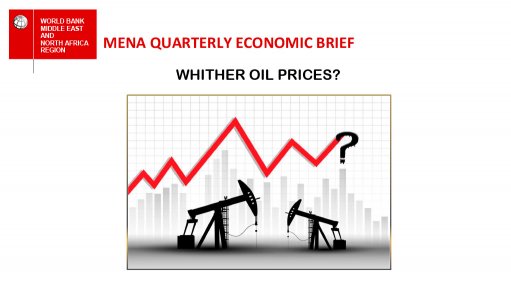
Since September 2014, world crude oil prices have fallen by more than half, setting a new low at $30 a barrel (Brent crude) in February 2016. Since then, prices rallied to $50 a barrel in May due to supply disruptions in Nigeria and Canada, and the seasonal increase in demand in the summer. The recent recovery did not hold because global stockpiles remain well above historical averages; Iran and Iraq are increasing production; and Russia and Saudi Arabia, among others, are producing at their highest levels since January 2016.
Even if the recovery is sustained, there is less chance that prices will revert to the triple digits observed during 2011-13 because of fundamental changes in the behavior of market players. In particular, with 4,200 idle oil wells (the backlog of unfracked wells) and a reaction time in ramping production up or down of about 4 to 6 months—compared with several years for conventional producers—the US shale oil industry may be the marginal producer. And Saudi Arabia appears to have relinquished its role as the swing producer who absorbs fluctuations in global demand and supply.
Clearly, the oil market has entered a new normal. This report seeks to understand the factors behind the new normal to discern the evolution of world oil prices in the future, and their implications for the economies of the Middle East and North Africa (MENA). We begin by trying to explain the oil price crash of 2014, noting that it was preceded by a significant increase in the size and frequency of volatility of oil prices. This volatility in turn contributed to the accumulation of oil inventories that many observers, including the U.S. Energy Information Administration (EIA), attribute to the decline in oil prices.
Noting that, historically, oil price slumps have lasted longer than spikes, we suggest that the current situation may persist because of the changing behavior of market players, and the fact that overall oil demand is weak and not expected to rebound anytime soon. Indeed, we find that the correlation between oil production and prices, which used to be positively-sloped, has turned negative: a decline in oil prices is met by an increase in production. In the absence of a pickup in demand1, this situation can result in rising oil inventories going forward.
Putting these findings together, we expect the world oil market to work through its current oversupply and rebalance in early 2020 at market-clearing prices that are close to the marginal cost of the last producer (US shale oil producers or another swing producer). Oil prices are likely to be in the range of $53 - $60 a barrel. Prices higher than the upper bound would encourage drilling rigs leading to another supply glut; prices below the lower bound would prevent them from entering the market. However, risks to the timing of market rebalancing remain high, stemming from an expectation of lower demand (see Footnote 1) and continuation of the oil glut.
Report by the World Bank